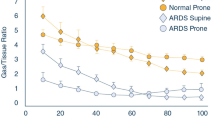Abstract
Objective
We retrospectively investigated the possibility that the 6-min walk test (6MWT) could predict surgical outcomes in lung cancer patients with decreased predicted postoperative (ppo) lung function.
Methods
Patients were enrolled based on their preoperative spirometry: <60% of the ppo forced expiratory volume in 1 s (FEV1.0) or < 60% of the ppo lung carbon monoxide diffusion capacity (DLco). Morbidity, oxygen inhalation required > 10 days, home oxygen therapy (HOT) requirement, unexpected readmission within 90 days, and 90-day mortality were included as surgical outcomes. The correlations with walking distance and the minimum SpO2 (SpO2min) and maximum decrease in SpO2 (ΔSpO2) during the 6MWT were analyzed using logistic regression analysis, adjusting for age, sex, and surgical procedure.
Results
Altogether, 121 patients were analyzed. Logistic regression analysis revealed that higher ΔSpO2 and lower SpO2min were significantly correlated with a higher risk of prolonged need for oxygen inhalation and HOT, surgical morbidity, and 90-day mortality. Cut-off values of > 4% for ΔSpO2 were significant for prolonged oxygen inhalation and surgical morbidity. Cut-off values of < 89–91% for SpO2min were also significant for the need for prolonged oxygen inhalation, surgical morbidity, and HOT requirement. There were no significant correlations between walking distance and each surgical outcome.
Conclusions
Oxygen desaturation during 6MWT was a good predictor for poor surgical outcomes in lung cancer patients with decreased ppo pulmonary function.


Similar content being viewed by others
Abbreviations
- 6MWT:
-
6-min walk test
- CPET:
-
Cardiopulmonary exercise test
- DLCO :
-
Carbon monoxide diffusion capacity of the lung
- FEV1.0 :
-
Forced expiratory volume in 1 s
- ppo:
-
Predicted postoperative
- SpO2 :
-
Oxygen saturation
- \(\dot {V}\)O2max:
-
Maximum oxygen consumption
References
Brunelli A, Kim AW, Berger KI, Addrizzo-Harris DJ. Physiologic evaluation of the patient with lung cancer being considered for resectional surgery: diagnosis and management of lung cancer, 3rd ed: American College of Chest Physicians evidence-based clinical practice guidelines. Chest 2013;143(Suppl): e166S–e90S.
British Thoracic Society; Society of Cardiothoracic Surgeons of Great Britain and Ireland Working Party. BTS guidelines: guidelines on the selection of patients with lung cancer for surgery. Thorax 2001;56:89–108.
Sawabata N, Nagayasu T, Kadota Y, Goto T, Horio H, Mori T, et al. Risk assessment of lung resection for lung cancer according to pulmonary function: republication of systematic review and proposals by guideline committee of the Japanese Association for Chest Surgery 2014. Gen Thorac Cardiovasc Surg. 2015;63:14–21.
Nakagawa T, Chiba N, Saito M, Sakaguchi Y, Ishikawa S. Clinical relevance of decreased oxygen saturation during 6-min walk test in preoperative physiologic assessment for lung cancer surgery. Gen Thorac Cardiovasc Surg. 2014;62:620–6.
Brunelli A, Charloux A, Bolliger CT, Rocco G, Sculier JP, Varela G, et al. ERS/ESTS clinical guidelines on fitness for radical therapy in lung cancer patients (surgery and chemo-radiotherapy). Eur Respir J. 2009;34:17–41.
Ninan M, Sommers KE, Landreneau RJ, Weyant RJ, Tobias J, Luketich JD, et al. Standardized exercise oximetry predicts postpneumonectomy outcome. Ann Thorac Surg. 1997;64:328–32.
Rao V, Todd TR, Kuus A, Buth KJ, Pearson FG. Exercise oximetry versus spirometry in the assessment of risk prior to lung resection. Ann Thorac Surg. 1995;60:603–8.
Brunelli A, Refai M, Xiumé F, Salati M, Marasco R, Sciarra V, et al. Oxygen desaturation during maximal stair-climbing test and postoperative complications after major lung resections. Eur J Cardiothorac Surg. 2008;33:77–82.
Markos J, Mullan BP, Hillman DR, Musk AW, Antico VF, Lovegrove FT, et al. Preoperative assessment as a predictor of mortality and morbidity after lung resection. Am Rev Respir Dis. 1989;139:902–10.
Pierce RJ, Copland JM, Sharpe K, Barter CE. Preoperative risk evaluation for lung cancer resection: predicted postoperative product as a predictor of surgical mortality. Am J Respir Crit Care Med. 1994;150:947–55.
Toker A, Ziyade S, Bayrak Y, Tanju S, Senturk M, Dilege S, et al. Prediction of cardiopulmonary morbidity after resection for lung cancer: stair climbing test complications after lung cancer surgery. Thorac Cardiovasc Surg. 2007;55:253–6.
Win T, Jackson A, Groves AM, Wells FC, Ritchie AJ, Munday H, et al. Relationship of shuttle walk test and lung cancer surgical outcome. Eur J Cardiothorac Surg. 2004;26:1216–9.
Varela G, Cordovilla R, Jiménez MF, Novoa N. Utility of standardized exercise oximetry to predict cardiopulmonary morbidity after lung resection. Eur J Cardiothorac Surg. 2001;19:351–4.
Acknowledgements
We thank Nancy Schatken, BS, MT(ASCP), from Edanz Group (http://www.edanzediting.com/ac) for editing a draft of this manuscript.
Author information
Authors and Affiliations
Corresponding author
Ethics declarations
Conflict of interest
The authors have declared that no conflict of interest exists.
Electronic supplementary material
Below is the link to the electronic supplementary material.
Supplementary Fig. 1
Correlation analysis of each 6-min walk test (6MWT) covariate with surgical outcomes in the major anatomical resection group. SpO 2 min minimum oxygen saturation, ΔSpO 2 change in SpO2, Distance distance walked in 6 min. Bold squares (■) = hazard ratios that were statistically significant; open squares (□) = hazard ratios that were not statistically significant (PPTX 711 KB)
Supplementary Fig. 2
Analysis of the change in oxygen saturation (ΔSpO2) and the minimum oxygen saturation (SpO2min) divided with cut-off values compared with surgical outcomes in the major anatomical resection group. Bold squares (■) = hazard ratios that were statistically significant; open squares = hazard ratios that were not statistically significant (PPTX 1373 KB)
Rights and permissions
About this article
Cite this article
Nakagawa, T., Tomioka, Y., Toyazaki, T. et al. Association between values of preoperative 6-min walk test and surgical outcomes in lung cancer patients with decreased predicted postoperative pulmonary function. Gen Thorac Cardiovasc Surg 66, 220–224 (2018). https://doi.org/10.1007/s11748-018-0888-z
Received:
Accepted:
Published:
Issue Date:
DOI: https://doi.org/10.1007/s11748-018-0888-z




